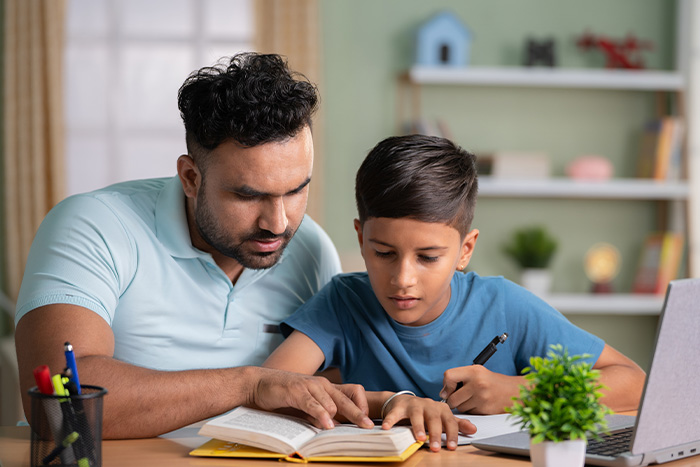
Literary Resources to Help Your Child Read Better


Reading is a passport to infinite worlds, a skill that not only opens realms of imagination for children but also lays the groundwork for their academic and personal growth. As we celebrate National Family Literacy Month this November, it’s the perfect time for families to come together and explore the world of books and the endless opportunities they present.
But what if your child faces challenges in reading? Thankfully, there are several resources available, especially in the Toledo, Ohio area, which aim to uplift and support young readers. In this article, we’ll spotlight these resources and provide some guidance for parents and caretakers seeking to enhance their child’s reading skills.
The Importance of National Family Literacy Month
Every November, National Family Literacy Month brings attention to the significance of reading and writing as family activities. It’s an invitation for parents and children to connect over stories, to discover new adventures in pages, and to create a lifelong bond with books. Reading together not only strengthens family ties but also enhances the child’s comprehension, vocabulary, and love for literature.
Tips for Parents to Encourage Reading at Home
Creating a literary-friendly environment at home can play a significant role in fostering your child’s love for reading. Here are some actionable tips to help you in this endeavor:
- Create a Reading Nook: Set up a cozy corner with a comfy chair, good lighting, and a shelf of enticing books. This dedicated space can make reading an eagerly anticipated activity.
- Lead by Example: Children are great imitators. If they see you engrossed in a book, they’re more likely to emulate the habit.
- Interactive Reading: Make reading a dialogue. Engage with your child about the story, discuss the characters, and let their imagination soar.
- Regular Library Visits: Libraries are treasure troves of stories waiting to be discovered. Regular visits can instill a love of books in your child.
Book Recommendations for Different Age Groups
Choosing the right book for your child’s age can make a big difference in their reading experience. Here are some age-specific recommendations to guide you:
- Toddlers: “The Very Hungry Caterpillar” by Eric Carle, “Brown Bear, Brown Bear, What Do You See?” by Bill Martin Jr. and Eric Carle.
- Young Readers: “Charlotte’s Web” by E.B. White, “Green Eggs and Ham” by Dr. Suess.
- Tweens: “Percy Jackson & The Olympians” series by Rick Riordan, “Harry Potter” series by J.K. Rowling.
- Teens: “The Hunger Games” by Suzanne Collins, “The Maze Runner” series by James Dashner.
The Role of Technology in Promoting Literacy
Technology plays a pivotal role in almost every aspect of our lives, and literacy is no exception. While the charm of traditional books remains timeless, the digital world offers a plethora of resources that can complement and enhance the reading experience, especially for the younger generation. Here’s how technology is reshaping the literacy landscape:
- E-books: These digital versions of traditional books have democratized access to a vast array of literature. With devices like Kindle and Nook, readers can carry an entire library in their pocket, adjust font sizes for comfort, and even look up word definitions instantly.
- Audiobooks: For those who might struggle with traditional reading, audiobooks offer an alternative way to consume stories. Websites like Audible feature thousands of books narrated by professionals, making it easier for children to understand and enjoy complex narratives. Plus, listening to stories can enhance comprehension and imagination.
- Literacy Apps: Modern apps have transformed the way children learn to read. Platforms like “Epic!”, “ABCmouse”, and “Starfall” provide interactive lessons, stories, and games that make reading fun and educational. These apps often come with progress trackers and personalized recommendations, helping parents and teachers monitor a child’s reading journey.
- Interactive eBooks: Beyond traditional e-books, there are interactive versions that include animations, voiceovers, and clickable elements. These eBooks can engage children in a multi-sensory reading experience, making challenging topics more understandable and enjoyable.
- Online Reading Communities: Websites like Goodreads allow readers to review books, share recommendations, and participate in reading challenges. For older children and teens, being part of such communities can foster a love for reading and promote discussions around books.
Incorporating technology into a child’s reading routine can offer diverse experiences, cater to different learning styles, and most importantly, keep them engaged in an increasingly digital world. However, it’s essential to strike a balance between digital and traditional reading to ensure a well-rounded literacy foundation.
Toledo-Area Nonprofits Championing Literacy
This esteemed library is more than just a place filled with books; it’s a hub of knowledge and a community partner in promoting literacy. With numerous programs, including story hours for younger children and reading clubs for older ones, the library plays a pivotal role in fostering a reading culture in our region. Their trained staff can also recommend age-appropriate books to help children overcome reading challenges.
Dedicated to ensuring everyone can read, this nonprofit offers several programs tailored for children and adults. Their Children’s Program, for instance, pairs young readers with trained volunteer tutors who work one-on-one, assisting them in building both skills and confidence. Their approach recognizes that reading is not just a skill but an important step toward personal empowerment.
This fantastic initiative encourages young readers, especially young men, to dive into the world of reading. They collect and distribute books, focusing on fostering a love for reading among children who may have limited access to books. Their ‘reading ambassadors’ – often local youth leaders – inspire others by sharing their love for literature.
This Latino-based organization understands the cultural and language challenges some children face. They provide not only literacy programs but also GED preparation and English as a Second Language (ESL) classes. By creating a bridge between cultures through reading, they make the literary world accessible to all children.
Conclusion
Promoting literacy is a joint venture between parents, educators, and the community. As we celebrate National Family Literacy Month, let’s commit to making reading a priority in our homes!
Continue the Conversation on Social Media
Care for Kids wants to hear from you.
- How do you make reading a fun activity for your child?
- Which book has your child recently enjoyed, and why?
- How has technology influenced your child’s reading habits?
